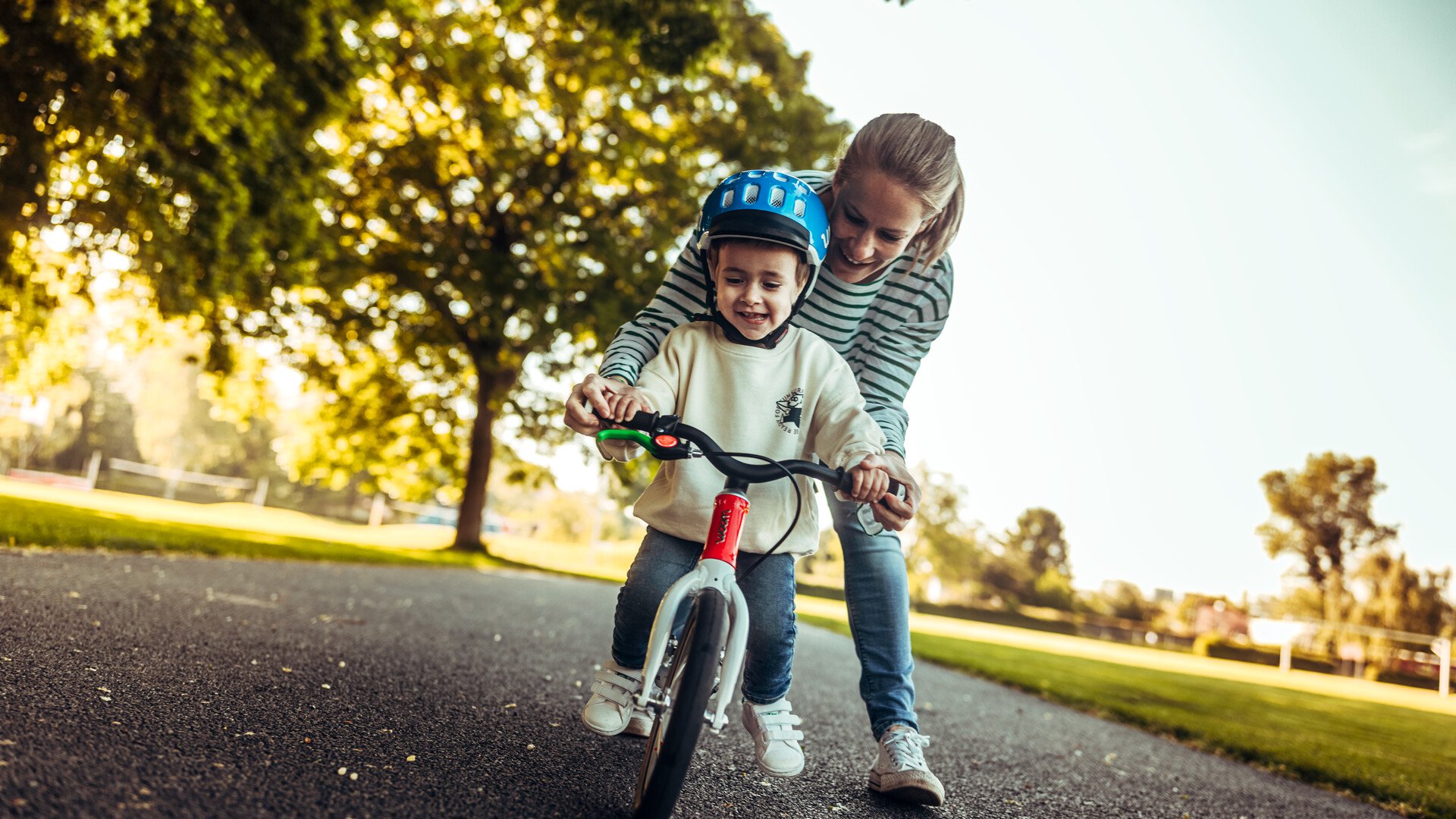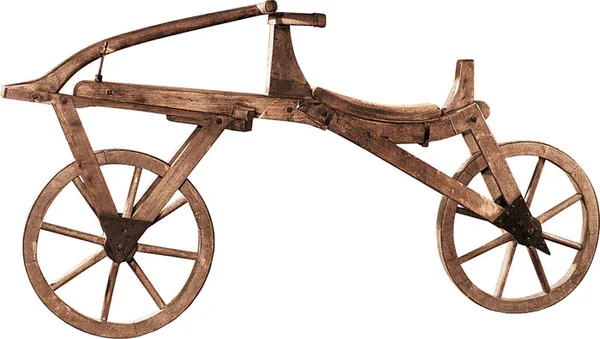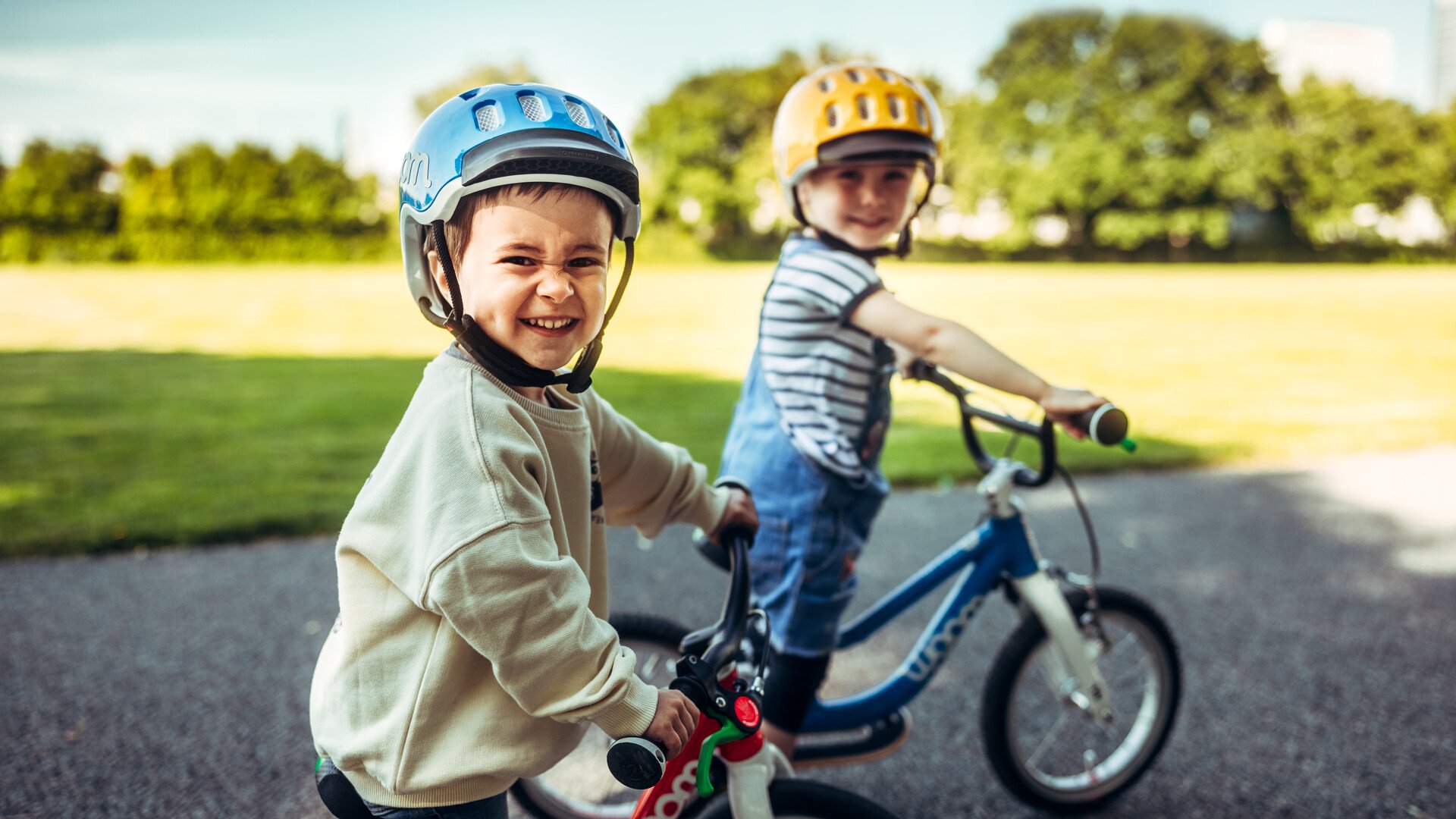Why Training Wheels Don’t Make Sense

For a child, time spent outside and being active is important.
If you’re a parent teaching your child to ride a bike, you’re doing a great thing.
But is there a “right” way to learn to ride a bike? There’s certainly an easier way! We believe that learning to ride a bike without training wheels helps a child learn sooner, faster, and more enjoyably.
Most parents know what they experienced themselves: training wheels. The (painful) memories of this rite of passage tend to stick with you. But a new generation of riders who have started out on balance bikes – and skipping the training wheels entirely – are learning to pedal at a much younger age. This earlier starting point, plus the ease of the experience, has resulted in an amazing phenomenon: a generation of kids who won’t remember a time in their lives when they couldn’t ride a bike.
“Balance Bikes” Came Before Training Wheels
There’s nothing new about balance bikes. Illustrations of the earliest bicycle, the laufmaschine invented by Karl Drais in 1817, show adult men in top hats and coattails doing just what today’s toddlers do—running their feet along the ground and coasting between strides.
The laufmaschine, which translates to “running machine,” was a revolutionary idea at the time: two small carriage wheels were attached to a wooden frame that also featured a triangular steering column, armrest, and padded saddle. While by today’s standards the device looks profoundly uncomfortable and unwieldy, the concept paved the way for the modern bicycle.
In the two centuries since Drais’ invention, we’ve seen many improvements—and more than a few mistakes. In 1949, as car ownership for adults was becoming more common and the bike industry began marketing bikes for children, Huffy introduced the first training wheels.
Why Training Wheels Teach the Wrong Things
Many people assume training wheels teach the skill of balancing, but in reality, it’s the opposite—a child learns to lean on them for support, and develops unhelpful turning techniques. Taking the training wheels off becomes a time of fear and essentially starting over from scratch. It’s like putting on a band-aid you never needed in the first place and then ripping it off. To quote the New York Times, "training wheels teach kids to lean in the opposite direction at the start of the turn and then oversteer with the handlebars to complete it. This can result in crashes after the training wheels come off."
“Parents, especially in America, feel that training wheels are the way, but it’s totally not the way,” says Andy Phelps, national support and sponsorship manager of the nonprofit Trips for Kids. “Bike companies are still producing training wheels because Americans want them. They haven’t changed the mindset. They think that’s how it’s supposed to be done, but all that’s doing is providing crutches instead of giving them an opportunity to learn how to balance!”
Cheaply made, heavy discount-store bikes also reinforce the idea that a child needs training wheels to ride. In fact, training wheels are needed on these discount bikes from other brands; how can children learn to balance and ride correctly on a bike that’s more than 50 percent of their body weight? Unfortunately, poor design invites a poor solution, as training wheels add even more weight and awkwardness.
Kids Lean on Training Wheels. They Learn on Balance Bikes.
A quality balance bike helps a child learn the most important aspects of riding first, including balancing and turning. Unlike tricycles or bikes with training wheels, balance bikes are versatile and can go almost anywhere a pedal bike can go, such as trails and inclines. Children can start riding a balance bike as early as 18 months.
When children are ready to take the next step and transition from balance bike to first pedal bike, they do so with skill and confidence at early ages—many children who start with balance bikes begin riding pedal bikes at 3 or 4 years of age. Pedaling is like fitting in the last piece of the puzzle; all the hard work is done already.
“From my experience with testers, you gain an average of about four years of independently riding and enjoying and understanding and seeing and experiencing what the bike can offer if you start with a balance bike versus a bike with training wheels,” says Natalie Martins from Two Wheeling Tots.
Martins explains that when children move from the balance bike to a pedal bike, the experience is nothing like days of yore; the difficult rite of passage many parents expect simply doesn’t happen. “Kids don’t get the fear and anxiety that used to come with learning to ride a bike,” Martins says. “Those fears are never actually even created. It’s usually just joy and very positive from day one.”
Learning to Ride Later
But what if your child didn’t ride a balance bike and is now in elementary school and still struggling to learn? You have plenty of things to worry about as a parent, so let’s take this off your list: it’s definitely not too late. Here are a few tips to get you started.
- Get the right bike. Many of our customers find woom bikes because they’ve had frustrating early experiences; those experiences can almost always be blamed on the bike, not the child. Purchase a bike that’s high quality and lightweight, and then you can ditch the training wheels without looking back. It might be tempting to buy a bike that your child will “grow into,” but do your child a favor and instead get them the right-sized bike for right now. Unnecessary weight can have a significant impact on a child’s learning experience and handling abilities. If the sticker price of a brand-new woom bike is a sticky point, consider the future resale value. We also have an upCYCLING program that allows you to get a discount on the next bike when your child is ready to size up.
- Put the bike in the child’s control. The fear of riding a bike is often the fear of falling; make the child feel comfortable and in control, and you’ll eliminate that fear. Rachel Varn, owner of PedalPower Kids, says she’ll often start new riders who would fit on the 20" woom GO 4 on the 16" woom GO 3 instead, for a short time, so that they can comfortably put their feet on the ground. When they have mastered the fundamentals of pedaling, she’ll quickly transition them back to the bike that’s the right size.
- Make adjustments. If you don’t have a smaller bike to borrow, you can still make adjustments to give the child a feeling of more control, such as lowering the seat. You might also consider leaving the pedals off at first, allowing your child to practice with the pedal bike as if it’s a balance bike. (Check out our full Learn to Ride content here.)
- Make it fun. Let children learn and experiment at their own pace. Take it slow, play games, and provide lots of encouragement. Some children will benefit from extra help getting started and stopping, or might like a parent to run alongside for additional support. Make plans to go to park or somewhere special, or schedule a bike playdate. Riding with other kids provides a huge incentive to learn—no one wants to miss out on that much fun!

